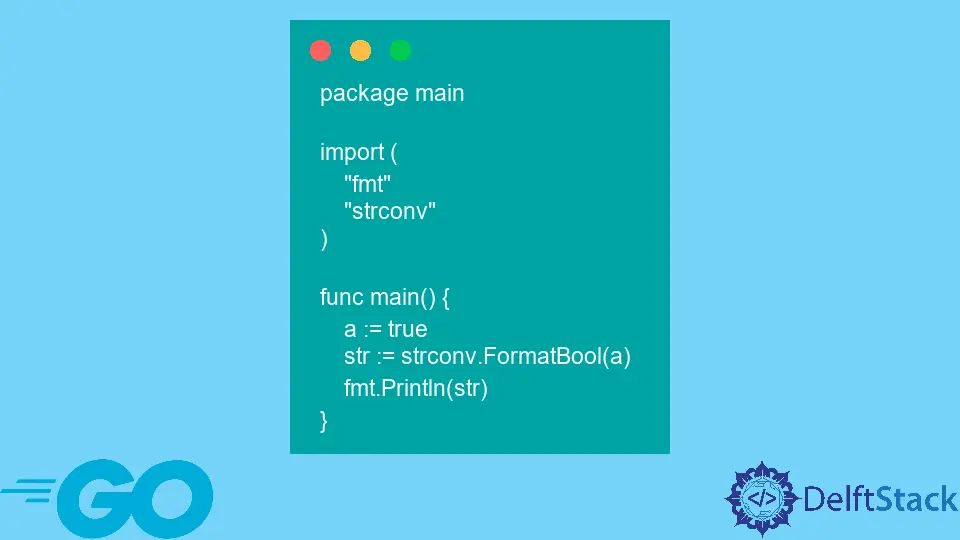Go でブール値を文字列に変換する

この記事では、Go でブール値を文字列データ型に変換する方法を紹介します。
Go で FormatBool を使用してブール値を文字列に変換する
以下の例では、FormatBool は a の値に応じて true または false を返します。
package main
import (
"fmt"
"strconv"
)
func main() {
a := true
str := strconv.FormatBool(a)
fmt.Println(str)
}
出力:
true
次の例では、FormatBool が引数としてブール値を受け取り、それを文字列に変換します。
package main
import (
"fmt"
"strconv"
)
func main() {
boolVal := true
strVal := strconv.FormatBool(boolVal)
fmt.Printf("Type of strVal: %T\n", strVal)
fmt.Printf("Type of boolVal: %T\n", boolVal)
fmt.Println()
fmt.Printf("Value of strVal: %v\n", strVal)
fmt.Printf("Value of boolVal: %v", boolVal)
}
出力:
Type of strVal: string
Type of boolVal: bool
Value of strVal: true
Value of boolVal: true
Go で Sprintf を使用してブール値を文字列に変換する
Sprintf 関数を使用して、ブール値を文字列に変換することもできます。
package main
import (
"fmt"
)
func main() {
boolVal := false
strVal := fmt.Sprintf("%v", boolVal)
fmt.Printf("Type of strVal: %T\n", strVal)
fmt.Printf("Type of boolVal: %T\n", boolVal)
fmt.Println()
fmt.Printf("Value of strVal: %v\n", strVal)
fmt.Printf("Value of boolVal: %v", boolVal)
}
出力:
Type of strVal: string
Type of boolVal: bool
Value of strVal: false
Value of boolVal: false
チュートリアルを楽しんでいますか? <a href="https://www.youtube.com/@delftstack/?sub_confirmation=1" style="color: #a94442; font-weight: bold; text-decoration: underline;">DelftStackをチャンネル登録</a> して、高品質な動画ガイドをさらに制作するためのサポートをお願いします。 Subscribe